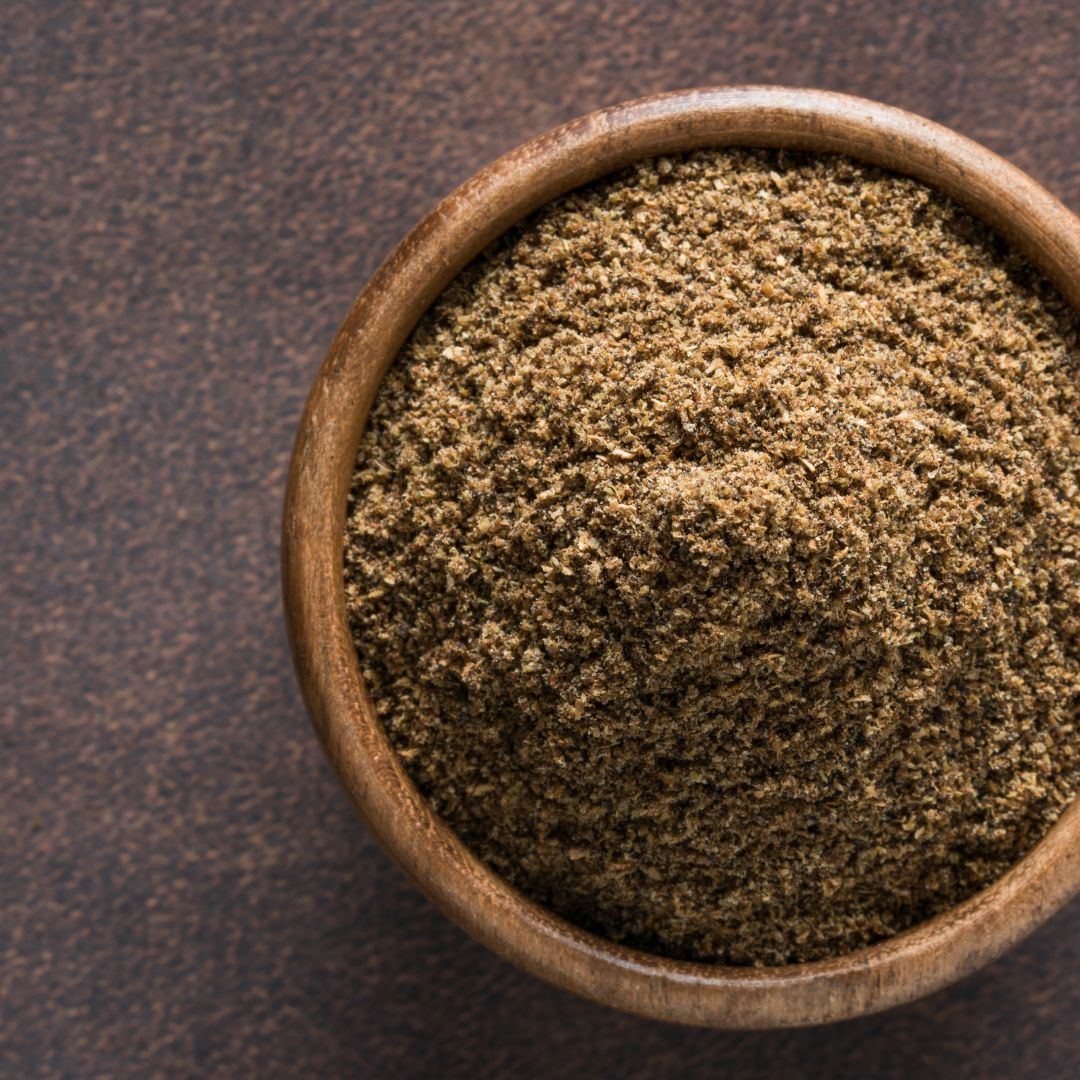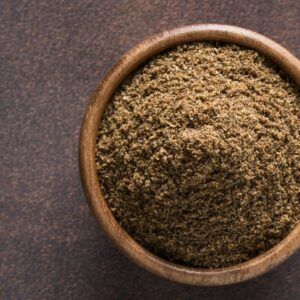
Biryani Garam Masala: The Heart of Flavorful Biryani
Biryani is one of the most beloved dishes in Indian cuisine, celebrated for its rich flavors, aromatic spices, and diverse regional variations. At the core of this delightful dish lies Biryani Garam Masala, a spice blend that elevates the taste and aroma of biryani to extraordinary levels. In this comprehensive blog, we will explore the origins, ingredients, preparation methods, variations, and tips for making the perfect Biryani Garam Masala.

Introduction to Biryani Garam Masala
Biryani Garam Masala is an essential spice blend used in various biryani recipes across India and beyond. It is known for its warm, aromatic flavors that enhance the overall taste of the dish. This masala is typically added during the marination of meat or vegetables and during the cooking process, ensuring that every grain of rice is infused with its rich essence.
Why You’ll Love This Recipe
- Versatile Flavor: Biryani Garam Masala can be used in various dishes beyond biryani, such as curries and stews.
- Homemade Freshness: Making your own garam masala allows you to control the freshness and quality of spices.
- Cultural Significance: Understanding how to make this spice blend connects you with traditional Indian cooking practices.
The Origins of Garam Masala
Garam masala has its roots in Indian cuisine, where it has been used for centuries to enhance flavors in various dishes. The term “garam” means “hot” in Hindi, referring not only to spiciness but also to the warming properties of the spices used in the blend.
Historically, garam masala was made using locally sourced spices that were believed to have medicinal properties. Over time, it evolved into a culinary staple that varies from region to region based on local tastes and available ingredients.
Cultural Importance
Garam masala is not just a spice mix; it represents cultural heritage and culinary traditions passed down through generations. Each family often has its unique recipe for garam masala, making it a personal touch in their cooking.
Understanding the Ingredients
Biryani Garam Masala is made from a variety of spices, each contributing its unique flavor profile:
- Whole Spices: Whole spices are often used in making garam masala as they retain their essential oils and flavors better than ground spices.
- Aromatic Properties: The combination of spices creates a complex aroma that enhances the overall sensory experience of biryani.

Biryani Garam Masala Powder
Ingredients
- 3-4 Dried Kashmiri red chilies for color and mild heat
- 7-8 Bay leaves tej patta
- 2 tablespoons Coriander seeds sabut dhania
- 1 tablespoon Cumin seeds jeera
- 1 tablespoon Caraway seeds shahi jeera
- 2-3 Mace blades javitra
- 2- inch piece Cinnamon stick dalchini
- 1 Nutmeg jaiphal
- 1 teaspoon Cloves lavang
- 3-4 Black cardamom pods badi elaichi
- 2-3 Star anise chakri phool
- 8-10 Green cardamom pods elaichi
- 1 tablespoon Black peppercorns kali mirch
- 1 teaspoon Fennel seeds saunf
- ½ teaspoon Turmeric powder haldi
Instructions
Dry Roasting Spices
- In a thick-bottomed pan or skillet, dry roast each spice separately over medium heat.
- Start with whole spices like bay leaves, red chilies, and cardamom until they become aromatic.
- Continue roasting other spices like cumin seeds, coriander seeds, cinnamon sticks, cloves, and nutmeg until fragrant.
- Be careful not to burn the spices; remove them from heat as soon as they become aromatic.
Grinding the Spices
- Allow roasted spices to cool completely before grinding.
- Transfer cooled spices to a spice grinder or blender.
- Grind into a fine powder; you can leave some tiny grits for texture if desired.
- If you prefer a smoother texture, you can sieve the ground masala to remove larger pieces.
Storing the Masala
- Transfer the freshly ground Biryani Garam Masala into an airtight container.
- Store it in a cool, dry place away from direct sunlight.
- For longer shelf life and freshness, consider refrigerating or freezing it.
Notes
Using Biryani Garam Masala in Cooking
Biryani Garam Masala can be used in various ways while preparing biryani:Marination
Add a tablespoon or two of garam masala to your chicken or vegetable marinade along with yogurt and other spices.Cooking Process
Incorporate garam masala when sautéing onions or adding rice to enhance flavor throughout the cooking process.Finishing Touches
Sprinkle some garam masala over the finished biryani before serving for an extra burst of flavor.
Variations of Biryani Garam Masala
While there are common ingredients used in most recipes, variations exist based on regional preferences:
North Indian Style
Typically includes more warming spices like nutmeg and mace along with dried ginger powder.
South Indian Style
May incorporate curry leaves or dried coconut for added flavor complexity.
Bengali Style
Often features additional spices like mustard seeds or poppy seeds for a unique twist.
Tips for Perfect Biryani Garam Masala
- Use Fresh Spices: Always use fresh whole spices for maximum flavor; avoid pre-ground spices if possible.
- Roast Carefully: Pay attention while roasting; burnt spices can impart bitterness to your masala.
- Small Batches: Prepare small batches to maintain freshness; large quantities may lose potency over time.
- Experiment: Feel free to adjust spice ratios based on personal preference; cooking is all about experimentation!
FAQs
1. What is Biryani Garam Masala?
Biryani Garam Masala is a blend of aromatic spices specifically used to enhance the flavor of biryani. It typically includes spices such as cardamom, cloves, cinnamon, and cumin, among others, which contribute to the rich taste and aroma of the dish.
2. How does Biryani Garam Masala differ from regular garam masala?
While both are spice blends, Biryani Garam Masala is specifically formulated for biryani dishes and may include additional spices or different ratios tailored to complement the flavors of rice and meat or vegetables in biryani.
3. Can I use store-bought garam masala instead of making my own?
Yes, you can use store-bought garam masala if you’re short on time. However, homemade Biryani Garam Masala offers fresher flavors and allows you to customize the spice levels according to your preference.
4. What are the key ingredients in Biryani Garam Masala?
Key ingredients typically include whole spices such as bay leaves, cardamom pods (green and black), cloves, cinnamon sticks, cumin seeds, coriander seeds, star anise, and dried red chilies. Some recipes may also include nutmeg and mace.
5. How do I store Biryani Garam Masala?
Store your homemade Biryani Garam Masala in an airtight container in a cool, dry place away from direct sunlight. For longer shelf life, you can refrigerate or freeze it.
6. How long does homemade Biryani Garam Masala last?
When stored properly in an airtight container away from moisture and heat, homemade Biryani Garam Masala can last for about 6 months to a year. However, its potency may diminish over time.
7. Can I adjust the spice levels in my Biryani Garam Masala?
Absolutely! Feel free to adjust the quantities of spices according to your taste preferences. If you prefer a milder flavor, reduce the amount of chili powder or omit certain spices that contribute heat.
8. How do I use Biryani Garam Masala in cooking?
Biryani Garam Masala can be added during the marination process for meat or vegetables, sprinkled when sautéing onions, or mixed into the rice while cooking to enhance the overall flavor of the biryani.
9. Can I use Biryani Garam Masala in other dishes?
Yes! While it’s specifically designed for biryani, you can also use it in other dishes such as curries, stews, lentils, and even roasted vegetables to add depth and flavor.
10. Is it necessary to roast spices before grinding them for garam masala?
Roasting spices before grinding enhances their flavors by releasing essential oils and aromas. This step is highly recommended for making a more flavorful garam masala.
11. What are some common mistakes to avoid when making Biryani Garam Masala?
- Over-roasting spices: This can lead to bitterness.
- Using old or stale spices: Fresh spices yield better flavor.
- Not balancing flavors: Ensure a balance between warm and aromatic spices.
12. Can I make a vegetarian version of Biryani using this masala?
Yes! Biryani Garam Masala works wonderfully with vegetarian biryanis made with vegetables like potatoes, peas, or paneer. It enhances the flavor profile just as effectively as with meat-based biryanis. Feel free to ask if you have more questions or need further information!
Conclusion
Biryani Garam Masala is an essential component that elevates biryani from a simple rice dish to an aromatic feast bursting with flavors. By understanding its origins, ingredients, and preparation methods, you can create your own homemade garam masala that will enhance your culinary creations.Whether you’re preparing a classic chicken biryani or experimenting with vegetarian options, incorporating homemade Biryani Garam Masala will undoubtedly take your dish to new heights! Enjoy your cooking journey and savor every bite of your delicious biryani!
